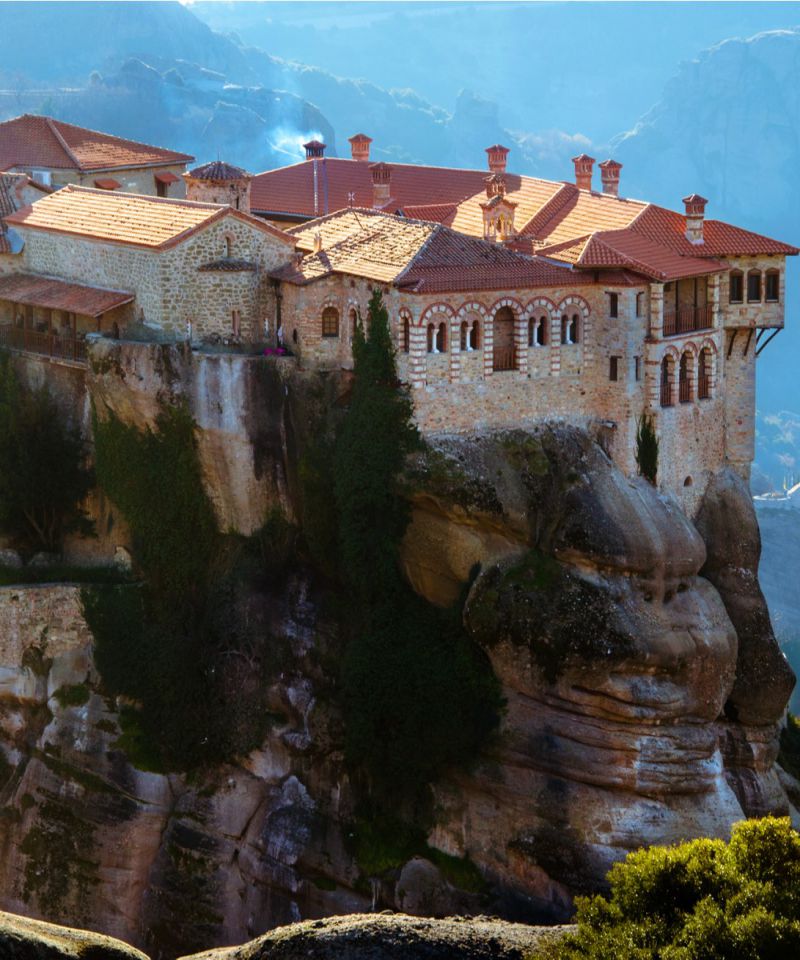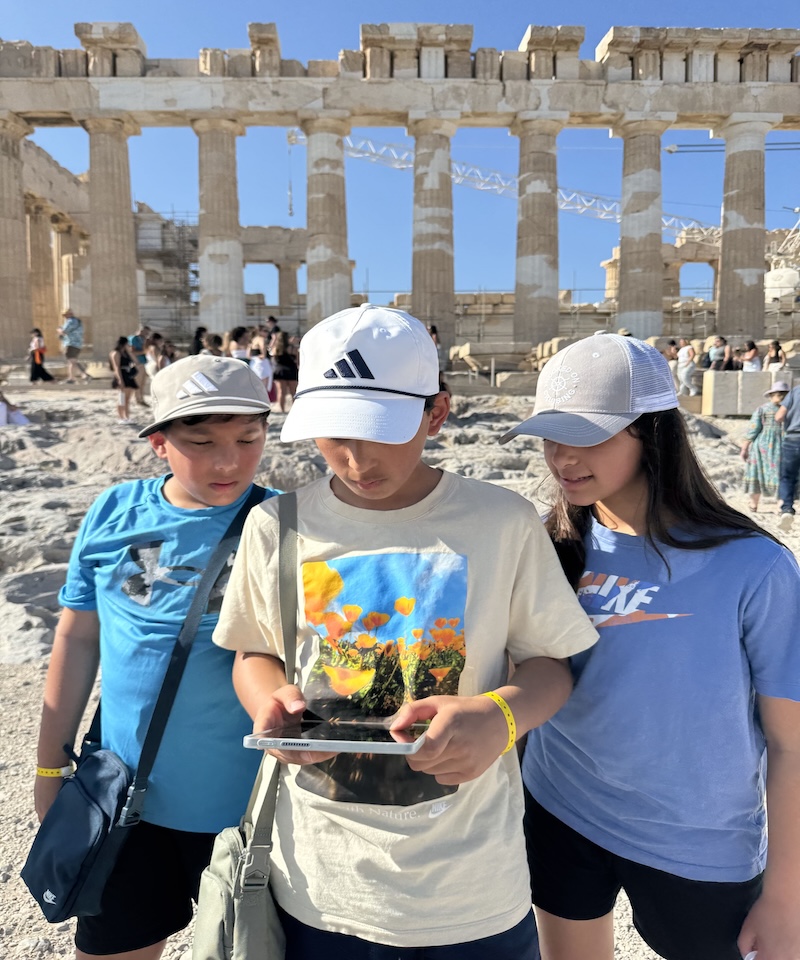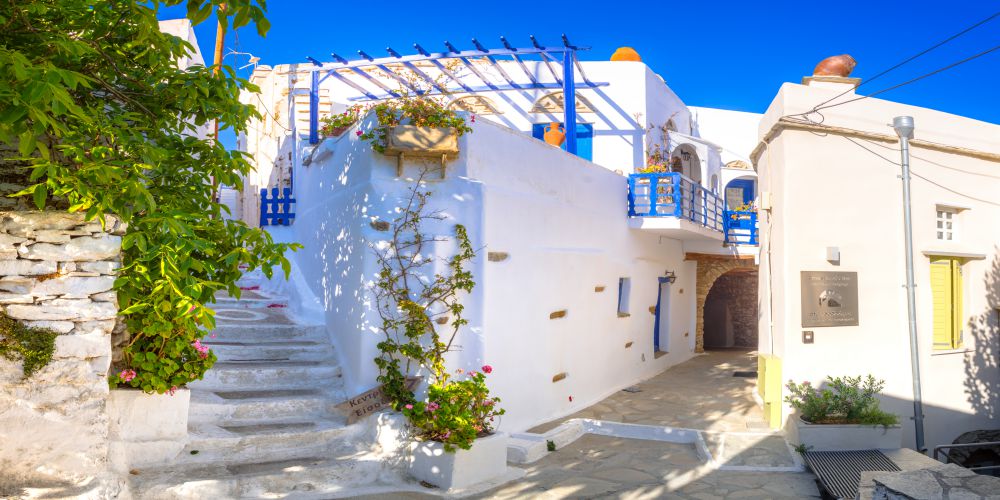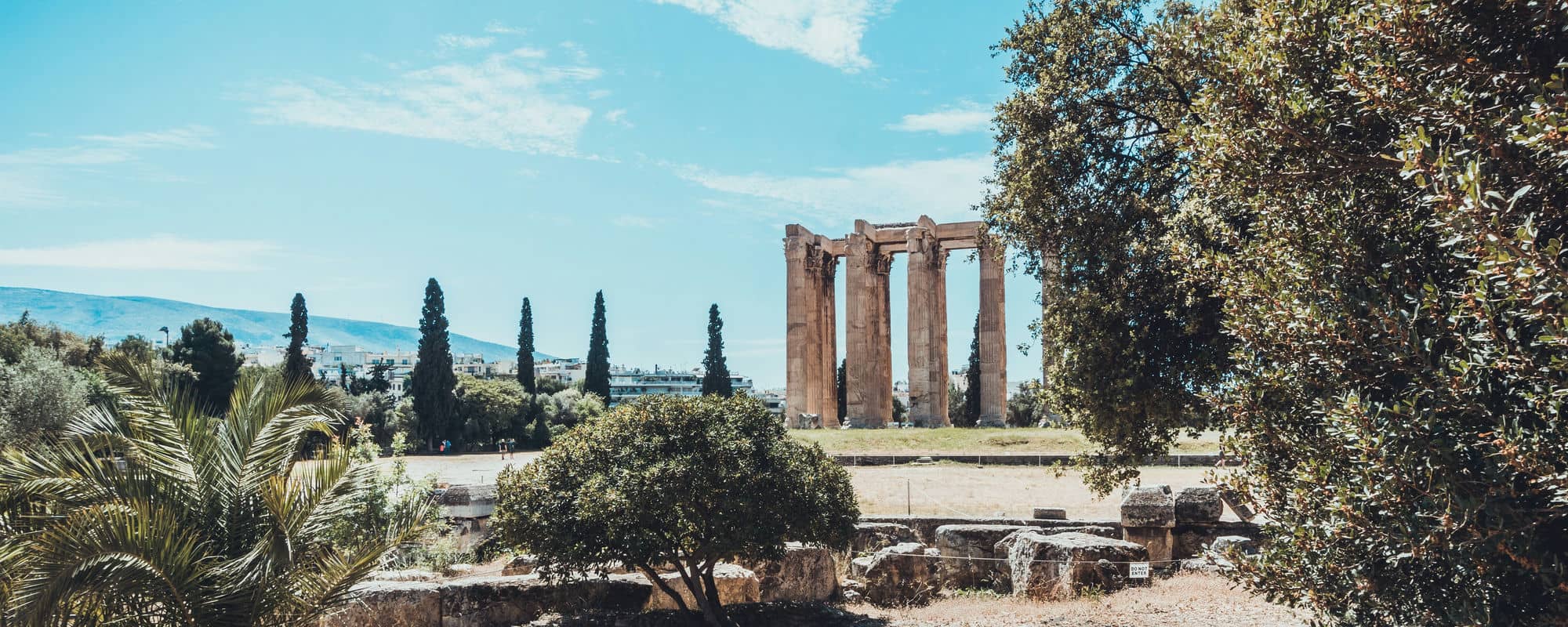
UNESCO World Heritage Sites in Greece: Exploring Ancient Wonders
Key Takeaways
- Greece is home to 19 UNESCO World Heritage Sites, showcasing its rich cultural and historical legacy.
- The Acropolis in Athens symbolizes ancient Greek civilization and democratic ideals.
- Preservation of these sites is vital for maintaining shared cultural heritage and educating future generations.
- Community involvement plays a crucial role in the successful preservation of Greece's historical landmarks.
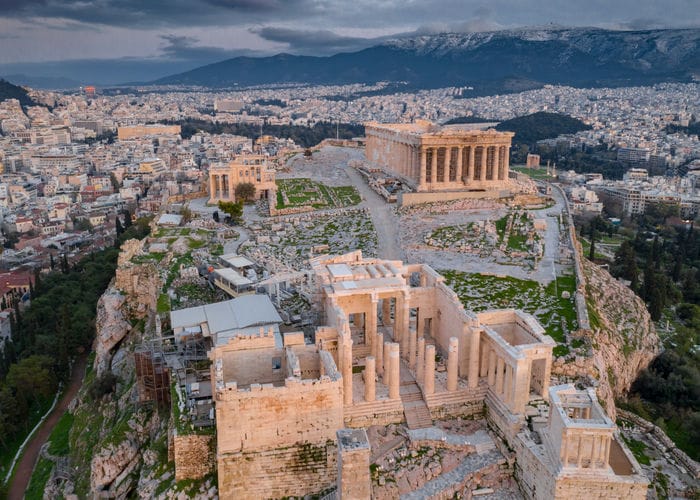
Greece is a treasure trove of culture and history, featuring the most important archaeological sites that trace back to ancient times.
Among its rich offerings are the UNESCO World Heritage Sites, which are not only cultural landmarks but also symbols of democracy, philosophy, and freedom of expression.
These sites highlight Greece's commitment to preserving its vast heritage.
The Acropolis in Athens stands as a monumental testament to ancient Greek civilization, representing both architectural genius and the birthplace of democratic ideals.
Other notable sites include the Archaeological Site of Delphi, a center for ancient religious and philosophical thought, and the Medieval City of Rhodes, which showcases Greece’s diverse historical layers.
Visiting these sites offers a deeper understanding of Mediterranean history and culture, drawing travelers eager to explore Greece's storied past.
Each location presents unique stories that have shaped not just Greece, but the broader world.
What Are UNESCO World Heritage Sites?
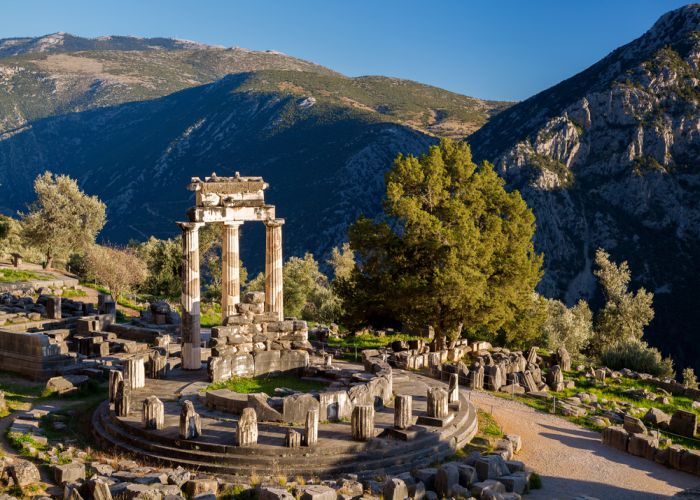
UNESCO World Heritage Sites are places recognized for their exceptional cultural or natural significance.
These sites have outstanding universal value and are preserved for future generations.
They reflect a diverse range of human history, monumental architecture, and natural beauty, emphasizing the importance of protecting cultural heritage.
Definition Of UNESCO World Heritage Sites
A UNESCO World Heritage Site is an area or landmark listed by the United Nations Educational, Scientific and Cultural Organization.
These sites hold outstanding universal value due to their cultural or natural importance. They help bridge connections across cultures and time, representing shared human history.
The designation aims to spread awareness of these sites' significance on a global scale.
This recognition is not limited to ancient ruins and can include modern developments that are of cultural, aesthetic, or historic importance.
Criteria For Selection As A World Heritage Site
Becoming a World Heritage Site involves meeting specific criteria set by UNESCO.
A site must showcase outstanding universal value and fit at least one of ten selection criteria.
These range from exhibiting human creative genius to containing exceptional natural beauty.
The criteria also emphasize aspects like the site's authenticity and integrity.
All sites must convey their importance through their cultural or natural uniqueness.
Regular monitoring also ensures that the sites maintain the values that earned them the designation.
Importance Of Preservation And Cultural Heritage
Preserving UNESCO World Heritage Sites is vital for maintaining our shared cultural heritage.
These sites offer insights into historical events, ancient civilizations, and natural formations that shaped our world.
It is equally important to preserve our natural heritage, which includes geological formations, habitats, and landscapes recognized for their scientific value and conservation significance.
Conserving them ensures that future generations can learn from and engage with diverse cultures and significant historical events.
International cooperation helps to protect these sites from threats like urban development or climate change.
Through these efforts, the stories and beauty of these places remain accessible to people worldwide.
Overview Of UNESCO World Heritage Sites In Greece
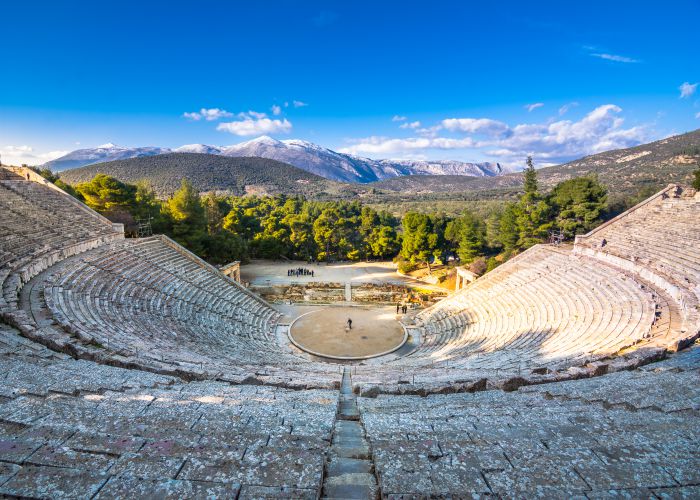
Greece is home to a wealth of UNESCO World Heritage Sites, highlighting its remarkable historical and cultural legacy. These sites attract visitors worldwide, enriching both tourism and education.
Greece's cultural richness is evident in its many ancient structures and locations.
Total Number Of UNESCO World Heritage Sites In Greece
Greece boasts a total of 19 UNESCO World Heritage Sites.
These sites are spread across various regions, showcasing the country's diverse heritage.
Each site offers a unique glimpse into the past, from ancient ruins to sacred monasteries.
Visitors can explore places like the Acropolis in Athens and the medieval city of Rhodes. These sites reflect the architectural, historical, and cultural evolution of Greece.
Breakdown Of Cultural And Mixed Heritage Sites
Among the 19 UNESCO sites in Greece, 17 are cultural sites.
These include masterpieces of architecture and art, such as the Archaeological Site of Delphi and the Temple of Apollo Epicurius at Bassae.
The remaining two are mixed sites: Meteora and Mount Athos.
Mixed sites have both cultural and natural significance, with Meteora’s stunning rock formations and monasteries, and Mount Athos being a spiritual center.
These areas are renowned for their rich monastic life, housing communities of monks dedicated to prayer, contemplation, and seclusion.
Significance Of These Sites For Tourism And Education
UNESCO World Heritage Sites in Greece play a crucial role in drawing tourists and education enthusiasts.
Tourists flock to Greece to witness its cultural landmarks, like the Acropolis and the ancient city of Olympia.
These sites provide rich educational opportunities, offering insights into ancient civilizations, religious practices, and artistic achievements.
Museums and guided tours enhance the learning experience, making Greece a key destination for history and culture enthusiasts.
The sites also boost the local economy by attracting international visitors and encouraging cultural exchange.
Top UNESCO World Heritage Sites In Greece
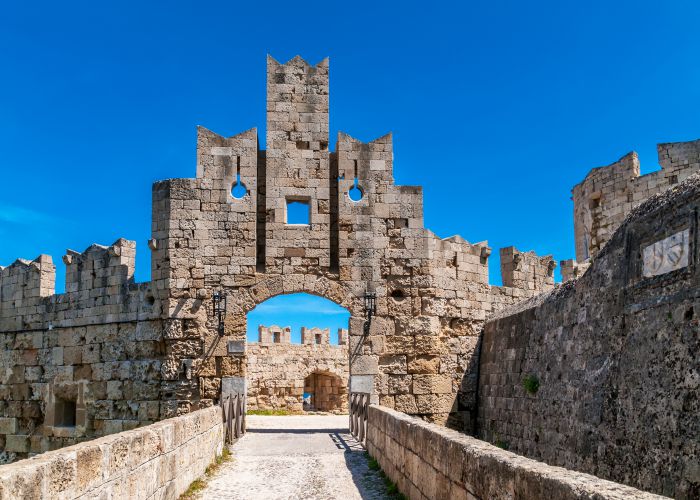
Greece is rich with UNESCO World Heritage Sites, each offering a glimpse into its storied past. These sites showcase ancient architecture, cultural traditions, and historical significance.
Acropolis Of Athens
The Acropolis of Athens stands as a symbol of ancient Greek civilization. It is located on a rocky hill overlooking the city of Athens.
The site includes several iconic structures such as the Parthenon, the Propylaia, the Erechtheion, and the Temple of Athena Nike.
The goddess Athena, to whom the Acropolis was dedicated, played a central role in its historical and cultural significance, with the Parthenon housing a grand statue of her.
Visitors are drawn to its towering fortification walls and impressive gateways.
The Acropolis Museum, situated nearby, houses numerous artifacts discovered at the site, providing a deeper insight into its historical context.
The best preserved monuments reflect the architectural and artistic achievements of the Golden Age of Athens, making the Acropolis a must-visit for history enthusiasts.
Meteora
Meteora is famous for its unique rock formations and ancient monasteries perched atop towering cliffs. Located in central Greece, this UNESCO site combines natural beauty with spiritual heritage.
Originally, monks settled here to seek solace and seclusion. Today, six of the original 24 monasteries are still active and open to the public.
Visitors can marvel at frescoes, religious artifacts, and panoramic views. The significance of post-Byzantine painting is evident in the 16th-century frescoes, which are pivotal artifacts showcasing a key phase in this artistic development.
The blend of nature and monastic architecture makes Meteora a striking example of harmony between human and environmental elements, attracting both pilgrims and tourists from around the world.
Archaeological Site Of Delphi
Delphi was once considered the center of the world by the ancient Greeks. It was home to the famous Oracle of Delphi, where priestesses conveyed prophecies.
The site includes the Temple of Apollo, the ancient theater, and the stadium. These structures highlight the importance of religion and sport in Greek society.
Key finds from Delphi are displayed in the Delphi Archaeological Museum, enriching the visitor's experience.
The historical aura of Delphi, combined with its scenic location on Mount Parnassus, forms a captivating destination for those interested in classical Greek culture and mythology.
Archaeological Site Of Olympia
Olympia is the birthplace of the Olympic Games. Situated in the Peloponnese, it houses ruins of temples, sports facilities, and statues dedicated to gods like Zeus and Hera.
The Temple of Zeus, once home to a massive statue of the god, remains a prominent feature.
Olympia’s archaeological museum contains numerous artifacts, including sculptures and ancient athletic equipment.
As one of the most important sites in ancient Greece, Olympia played a crucial role in the development of Western civilization.
Its historical significance and ties to the modern Olympic movement make Olympia an essential destination for sports and history enthusiasts alike.
Ancient City Of Mystras
The ancient city of Mystras offers a glimpse into the Byzantine Empire.
Located near Sparta, it features well-preserved paleochristian and Byzantine monuments, including castles, Byzantine monasteries, castles, and palaces.
Mystras served as a cultural and military center during the 14th and 15th centuries.
The Frankish fortress erected in 1249 played a crucial role in its development as a thriving cultural and political center, especially after it came under Byzantine control in 1262.
Visitors are captivated by its detailed frescoes and medieval architecture.
Wandering through the ruins provides insight into the lives of the Byzantines. It serves as a testament to the empire’s artistic and architectural achievements, making it a fascinating site for those intrigued by medieval history.
Temple Of Apollo Epicurius
The Greek Temple of Apollo Epicurius at Bassae is a masterpiece of ancient architecture. It is located in a remote part of the Peloponnese and was designed by Iktinos, an architect of the Parthenon.
Notable for its use of all three classical orders—Doric, Ionic, and Corinthian—the temple stands out with a unique design. It is considered a pioneering example of Hellenic monument building.
The temple's remote location adds to its allure, offering a peaceful setting for exploration.
Despite its seclusion, the temple's architectural brilliance, showcased in classical Greece, continues to draw visitors.
Medieval City Of Rhodes
The Medieval City of Rhodes is an exemplary medieval urban ensemble, with the same aesthetic characteristics of Medieval times.
It is located on the island of Rhodes and surrounded by imposing fortification walls.
The city was a stronghold for the Knights of St. John, who refurbished and fortified it.
Visitors can explore the Palace of the Grand Master, the Street of the Knights, and numerous churches and houses.
The blend of Gothic and Ottoman architecture creates a unique atmosphere.
The Gothic architecture, exemplified by significant structures like the Palace of the Grand Masters and the Great Hospital, highlights the cultural and historical significance of the site.
Rhodes’ mix of history and culture makes it a vibrant place, offering endless exploration opportunities for those interested in medieval history.
Archaeological Site Of Aigai (Vergina)
Aigai, known today as Vergina, was the first capital of ancient Macedonia. It is famous for its royal tombs, including that of Philip II, father of Alexander the Great.
The site features remnants of the palace, theaters, and extensive wall fortifications.
A monumental palace discovered at Aigai is a significant architectural achievement from the mid-4th century BC, adorned with luxurious features such as mosaic floors, and linked to the royal family and their cultural activities.
The museum at Vergina showcases royal artifacts, including crowns, weapons, and ceremonial items.
Aigai’s historical significance, highlighted by its connection to Macedonia’s powerful dynasty, provides visitors with a deeper understanding of ancient Greek history and royalty.
Historic Centre Of Corfu
The Historic Centre of Corfu reflects centuries of cultural influences. Located on the island of Corfu in the Ionian Sea, its strategic position made it a focal point of trade and military routes.
The old town is characterized by narrow alleys, Venetian fortresses, and neoclassical buildings.
Many buildings also date from the period of British rule in the 19th century, highlighting the architectural legacy from that era.
Key attractions include the Old Fortress, the Liston Promenade, and the Palace of St. Michael and St. George.
Corfu’s distinctive architecture and vibrant cultural life make it a unique site to explore. The town harmoniously blends different historical aspects, offering a rich experience for visitors.
The Sanctuary Of Asklepios At Epidaurus
Epidaurus is famed for its ancient theater, celebrated for perfect acoustics. The sanctuary was a healing center dedicated to Asklepios, the god of medicine.
It also functioned as a significant religious sanctuary, symbolizing the cultural and spiritual essence of ancient Greece.
Visitors can explore various buildings such as the abaton, used for healing, and extensive ruins of baths and temples.
The theater, still in use today, hosts performances and events, showcasing its enduring legacy.
The sanctuary’s combination of health, culture, and history provides a captivating attraction.
It serves as a reminder of the pivotal role of medicine and the arts in ancient Greek life.
Preservation And Challenges Of UNESCO World Heritage Sites In Greece
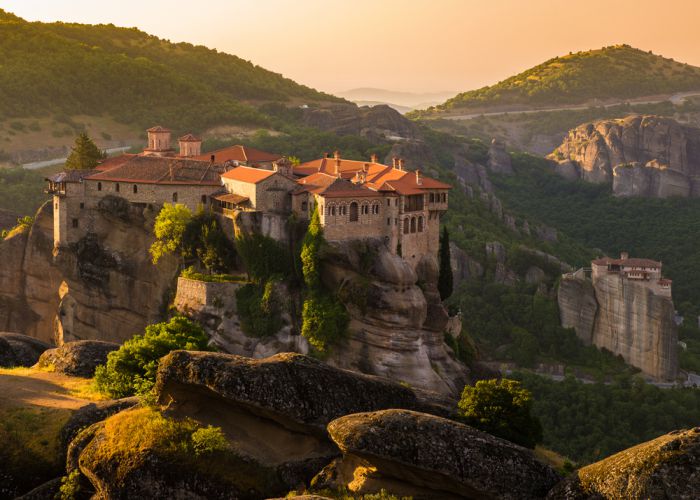
Greece is home to numerous UNESCO World Heritage Sites, including public buildings which face both natural and human-made threats.
Efforts to protect these sites are ongoing, involving both UNESCO and local authorities. Community engagement also plays a vital role in the preservation process.
Threats To Preservation: Tourism, Urban Development, Climate Change
UNESCO World Heritage Sites in Greece are under considerable pressure from tourism. Popular sites, like the Acropolis, receive millions of visitors each year.
This constant foot traffic can lead to erosion and damage to ancient structures.
Urban development poses another challenge. Expansion projects sometimes encroach on protected areas, threatening to disrupt the cultural landscape.
Legislation helps manage this, but illegal construction remains a concern.
Climate change adds further strain, resulting in rising temperatures and unpredictable weather patterns.
These factors can accelerate the wear on ancient sites, posing long-term risks. Buffer zones often help to mitigate some pressure, but challenges persist.
Efforts By UNESCO And Local Authorities To Protect Sites
UNESCO collaborates closely with Greek authorities to ensure the conservation and restoration of Heritage Sites.
Laws like Greece’s Law No 3028/2002 provide a legal framework to safeguard cultural heritage and the protection of antiquities.
Strengthening buffer zones has proven effective in minimizing risks from nearby urban development.
Local programs also focus on restoration projects that aim to repair and maintain structures.
UNESCO initiatives often include training programs for site managers.
This fosters better preservation practices and enhances the capacity to implement conservation strategies effectively.
Together with local input, these measures help to maintain the integrity of these ancient sites.
Importance Of Community Involvement And Awareness
Community involvement is crucial to the success of preservation efforts.
Local residents and community organizations can serve as stewards of these sites, offering valuable insights and support.
Raising awareness about the importance of cultural heritage helps garner public support for preservation projects.
Educational initiatives aim to engage the public and promote respect for these historic places.
When communities value their heritage, they are more likely to advocate for its protection.
Active participation of communities leads to more sustainable conservation practices.
This ensures that Greece's UNESCO World Heritage Sites continue to be protected for future generations. Community cooperation is key to addressing preservation challenges effectively.
Final Thoughts
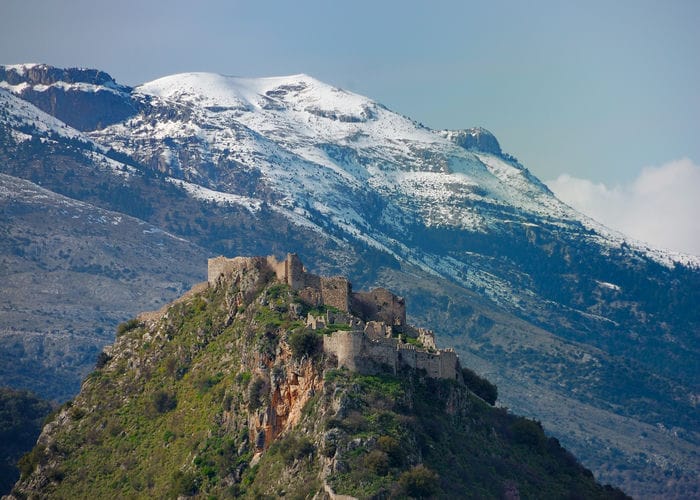
Greece is home to an impressive number of UNESCO World Heritage Sites.
These sites highlight the rich cultural and historical heritage of the country. There are 19 properties in Greece inscribed on the World Heritage List.
Cultural significance:
Many of Greece's sites are cultural, showcasing ancient Greek contributions to art, architecture, and philosophy.
Visitors can explore these places to gain insights into the ancient world.
Mixed sites:
Two sites, Meteora and Mount Athos, are classified as mixed. They combine cultural importance with natural beauty, offering unique experiences to those who visit.
Popular destinations:
Some of the well-known sites include the Acropolis in Athens and Olympia, home to the ancient Olympic Games.
These locations not only tell stories of the ancient Greek world but are also key tourist attractions today.
Including Greece's cultural and mixed properties, the UNESCO recognition highlights their global importance.
Visiting these World Heritage Sites is a journey through time, celebrating humanity's shared history and achievements.






